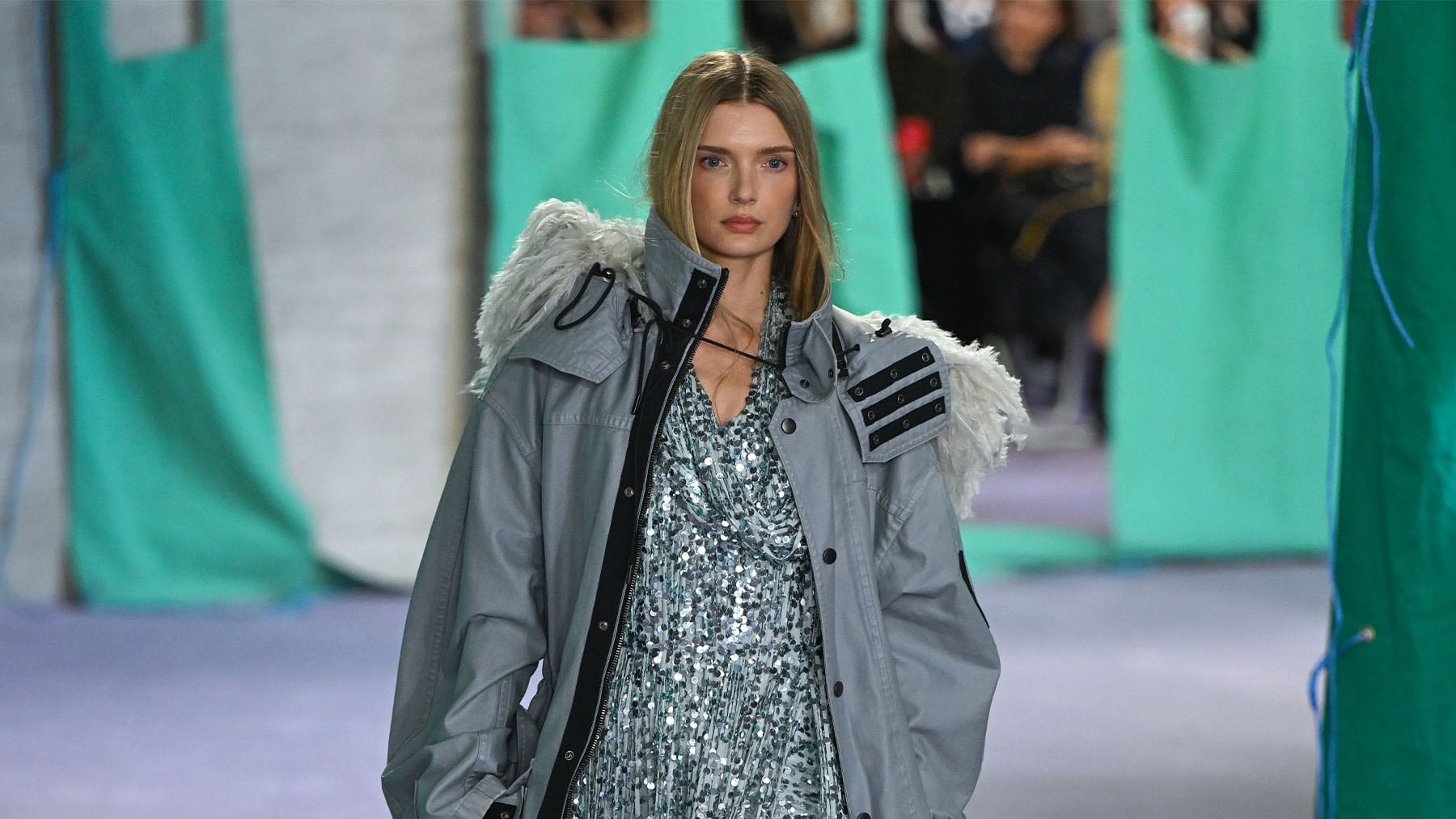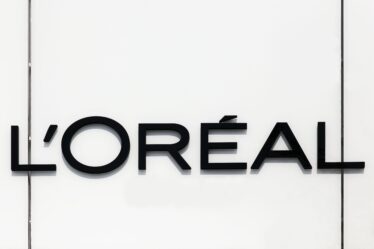
What a difference a year makes.
During September 2023′s London Fashion Week, Burberry Group Plc dominated, renaming Bond Street underground station as “Burberry Street” and taking over a traditional London café. It even snapped baker and national treasure Mary Berry in the venue, Norman’s.
Twelve months on, and the picture could not be more different. Burberry has issued three profit warnings and parted company with chief executive officer Jonathan Akeroyd. It was recently ejected from the FTSE 100 index. With its shares trading at a 15-year low, its market capitalisation has shrunk to about £2 billion ($2.6 billion) from almost £10 billion in March 2023.
The company put its best foot forward at its show in London on Monday, overseen by creative director Daniel Lee. However, it was much more low key than previous events — held at the National Theatre rather than a custom-built marquee — indicative of the fact that Burberry is set to become a very different kind of luxury company.
Under Akeroyd, it aimed to be the British LVMH Moet Hennessy Louis Vuitton SE. Led by new CEO Josh Schulman, it could be more like Ralph Lauren Corp.
Schulman is poised to set out his strategy in November. But the catwalk gave us a few clues. The show was heavy on outerwear, suggesting that he will return to Burberry’s traditional heartlands of coats and jackets, particularly its classic trenchcoat, where the company still has luxury positioning. This focus would make sense as Burberry has a better chance competing with the likes of high-end down-jacket-maker Moncler SpA than with leather-goods powerhouse Louis Vuitton.
There were far fewer bags on the runway, indicating that ambitions here may be more modest after several years of Akeroyd seeking to drive the company’s growth through accessories.
Speaking after the show, Schulman said he wanted to stay the course on elevating the brand over the long term, but with a better balance on prices. High fashion styles are likely to be accompanied with more affordable items to win back core shoppers who have deserted it. This model of stretching from runway to more accessible lines, as well as operating outlet stores, is reminiscent of Ralph Lauren Corp., whose shares have been one of the few to buck the downturn in luxury.
But yet another repositioning for Burberry is not without challenges. Pricey coats and cheaper items elsewhere risk confusing the customer.
Selling more premium, rather than super-luxe products, can also be tricky. Tapestry Inc.’s Coach, which operates in the more-accessible segment, has done a good job turning around its fortunes, with Gen-Z friendly products such as the Tabby bag, but its revival did not happen overnight. Less wealthy shoppers remain under pressure. It’s worth remembering that Ralph Lauren’s success has actually come from moving upmarket. And Burberry also generated about 40 percent of its sales from Chinese consumers before the pandemic, so the luxury downturn in the country is another headwind.
Then there is the question mark over whether Lee will remain as lead designer. A less luxurious Burberry would be a different proposition to the company he joined.
One ray of hope is the reunion tour from the band Oasis, which championed Burberry in the ‘90s. In photos doing the rounds again, frontman Liam Gallagher is pictured wearing the brand’s trademark check. The accord between the Gallagher brothers is also spurring the rise of the #Britishcore TikTok trend.
Akeroyd’s strategy was all about Burberry’s Britishness. While Schulman, an American, looks likely to ditch many elements of his predecessor’s plan, he should emphasise this heritage further. So far, Burberry’s turnaround has lacked buzz. A return of Britpop could be just what it needs.
Liam’s son Lennon Gallagher is already a face of the brand, and was at the show, but Burberry should embrace Oasis fever even more.
Moncler’s Stone Island, another favourite of the band in their heyday, has signed up Liam Gallagher to be a star of its autumn winter campaign. Burberry outfitting the brothers for the forthcoming tour, for example, would be a smart move.
If such efforts fail to revive the company, then a takeover looks like the only hope. But here, the picture isn’t clear cut either.
Tapestry is a natural buyer, but it is battling the Federal Trade Commission’s efforts to block its $8.5 billion purchase of Capri Holdings. If this deal doesn’t close, then Burberry might be a consolation prize. The brand, which before its recent slump had about £600 million in net cash excluding lease liabilities, could also be appealing to private equity, which could overhaul the company away from the glare of public markets.
Then there’s Mike Ashley. His Frasers Group Plc owns upmarket boutique Flannels, and he has previously taken stakes in Hugo Boss AG and Britain’s Mulberry Group Plc — both not too far off from Burberry. Given the sharp decline in the share price, and the fact that with a holding he would be able to strong-arm Burberry into supplying Flannels with its best products, Ashley would also be a logical investor. But so far, he has failed to show any interest.
Without Cool Britannia coming to Burberry’s rescue, or a bidder checking in, shareholders risk looking back in anger, yet again.
By Andrea Felsted



